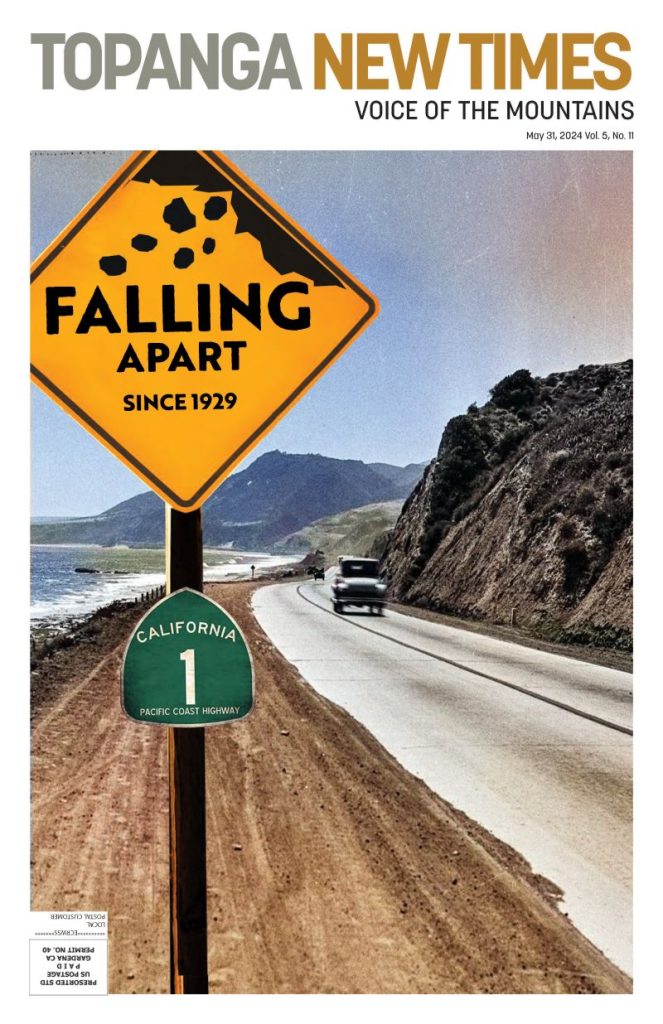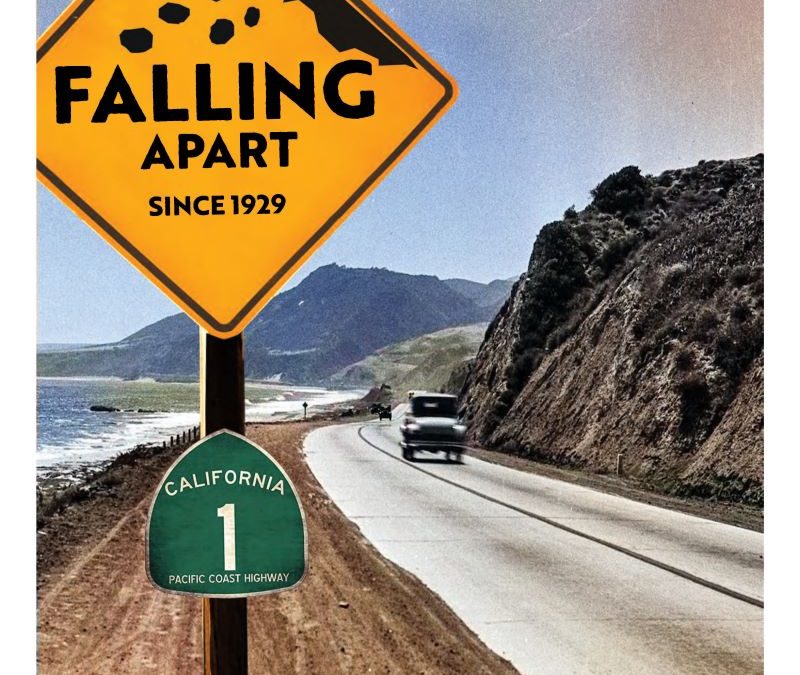
The coast highway isn’t just a disaster waiting to happen, it’s a series of disasters that repeat over and over again. The people who built the local stretch of the coast route in the 1920s were in a hurry to run the road across the previously off-limits Malibu Rancho. They didn’t worry about things like earthquake faults, or landslide zones, or coastal erosion, but they should have. Join us for a look at the history of this scenic, storied, and troubled stretch of highway. Cover concept and design by Urs Baur
Memorial Day marked the unofficial start of summer. For Topanga residents, and those who use Topanga Canyon Boulevard to reach the coast, this summer may feel longer, hotter, and a lot less fun. Having the ocean in easy reach is one of the joys of life here. This summer, it is a lot farther away thanks to the many tons of rock and earth still blocking Topanga Canyon Boulevard. The good news is that the slide may be shallower than first thought; the bad is that the remediation process is still expected to take all summer. So many activities and necessities remain inconveniently out of reach: beach days; afternoons at the Santa Monica Pier; museums, concerts and events; surfing or sunsets in Malibu; trips to the airport, and every other thing on the Westside remain twice as difficult to reach, twice as far away. Add summer traffic to the mix, and this might be a good time for those with spare time to stay home and explore the mountains in our backyard, and look for services and activities in the valleys or right here in the canyon. Getting around the road closure will continue to require patience, endurance and ingenuity and while residents grapple with the ongoing change of plans, local businesses continue to depend on us to help get them through this marathon disaster.
Topanga Days, the canyon’s home grown, one-of-a-kind music festival took place last weekend—not even 80,000 dump trucks worth of landslides could stop this local tradition. The funds raised go to support the Topanga Community Center, and that center will be more important than ever this summer, as families look for activities that don’t involve three-hour drives.

Topanga’s location in the mountains and near the beach, remote enough for tranquility but close enough to town for convenience is a major part of what draws people here. Those qualities changed this year but one thing did not: the heart and character of Topanga people, who come together during challenging times and help each other through them. This is still a special place, even if it’s a lot less convenient to access at the moment.
Topanga isn’t the only place experiencing road closure problems. Slides in Big Sur are also a major problem. As we enter summer, that most famous and scenic stretch of Highway One has finally reopened to local traffic, but only on an alternating, one-lane-only, basis. Like Topanga, the businesses in Big Sur are heavily tourist dependent. Big Sur State Park has reopened for the first time in months, but access is still limited, and unlike Topanga, there aren’t alternative ways to get around the closure.
We’ve talked a lot about Topanga’s main road this year, and how the problems, like this landslide, were baked in when the road was built. In this issue of TNT we’re taking a look at the history of the local stretch of Pacific Coast Highway, which shares a similar history, and a lot of the same problems, only on a bigger scale. In our last editorial we ruffled some feathers asking if it is possible to keep repairing roads in places where climate change can reasonably be expected to cause more and bigger landslides and erosion issues. We’re asking the same questions again this week, but we don’t have any answers, except that, just because a road can be built doesn’t mean it should, or that it will last forever once it is.
It doesn’t happen very often, but every now and then, something that was lost is regained. That’s the case with Froggy’s, Topanga’s much-loved and long lamented restaurant, closed since before the Covid pandemic, is back, and we have the story.
The road closure is a reminder of how fragile this community can be, Topanga Days is a celebration of the canyon’s resilience, and the reopening of Froggy’s is a welcome opportunity to bring the community together and make new memories, the kind that will become the next chapter of this canyon’s storied and constantly evolving history.
Stay safe, be well!













